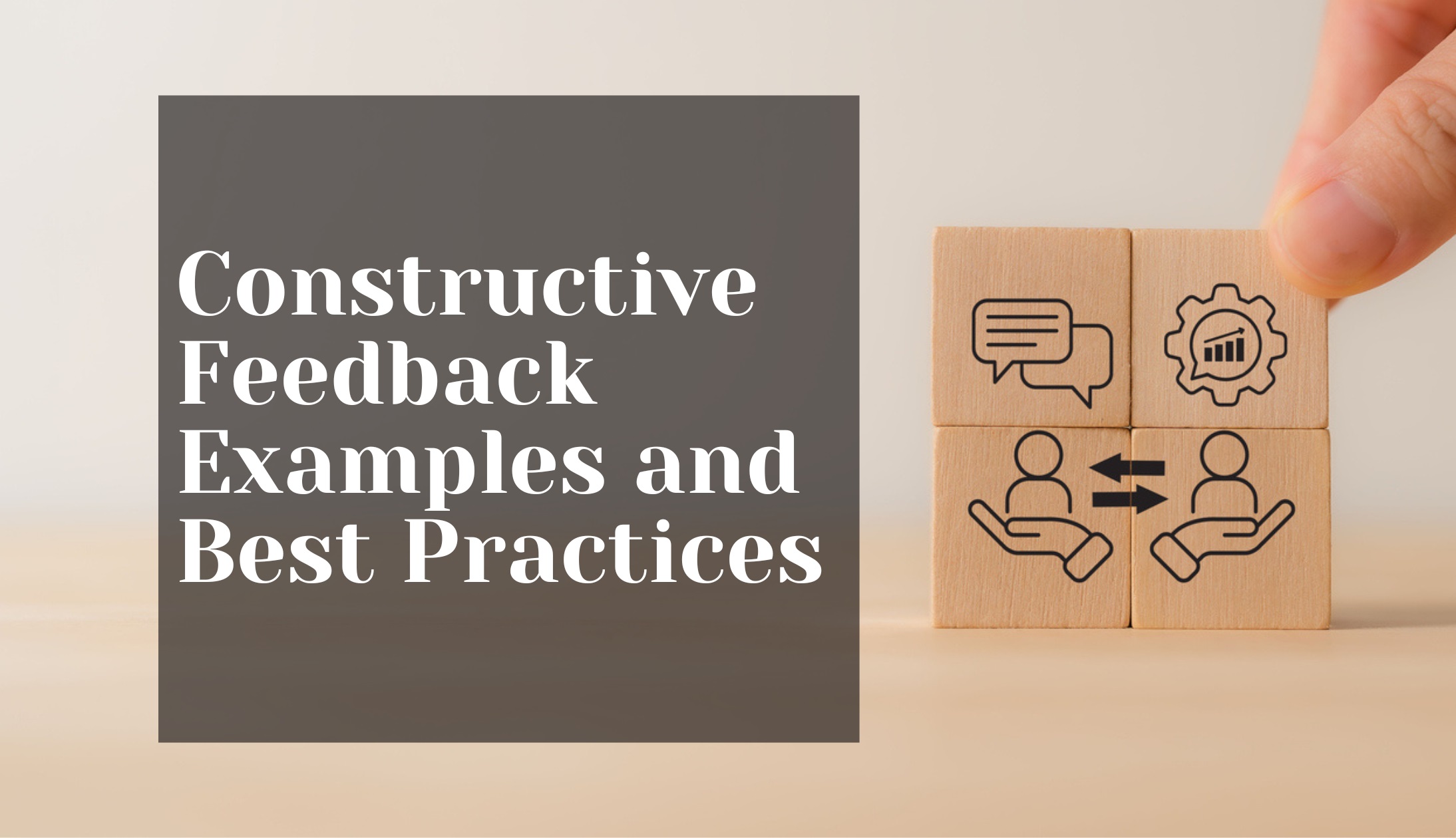
Constructive feedback is a cornerstone of effective leadership and team development. When delivered thoughtfully, it empowers employees to grow, boosts morale, and fosters a culture of continuous improvement. This guide explores the meaning of constructive feedback, provides actionable examples—including positive feedback, negative feedback, and constructive criticism—and offers tips for integrating these practices into performance reviews.
What Is Constructive Feedback?
Constructive feedback is specific, actionable input aimed at helping someone improve their performance, behavior, or outcomes. Unlike generic praise or criticism, constructive feedback highlights both strengths and areas for improvement, always with the intent to support growth and development.
Positive Feedback Examples
Recognizing achievements and reinforcing positive behaviors is essential for motivation and engagement. Here are some positive feedback examples:
– “You did a great job on this project, keep up the good work and feel free to tell me if you need support!”
– “Thank you for your extra efforts on [specific project]. Your initiative made a real difference to the team’s results.”
– “Your attention to detail has really improved our workflow. Clients have commented on the thoroughness of your reports.”
Negative Feedback Examples (Delivered Constructively)
Negative feedback should be delivered with empathy and clarity, focusing on behaviors rather than personal traits. Here are some constructive feedback examples addressing challenges:
– “I’ve noticed you’ve missed a few deadlines this month. Let’s talk about what’s getting in the way and how I can support you to get back on track.”
– “Your quality of work is commendable, but I’ve noticed some struggles with time management, leading to missed deadlines. Let’s work together to improve this.”
– “The assignments you’ve turned in recently don’t seem to be up to your usual standards. Are you struggling with your workload or is there something I can help with?”
Constructive Feedback on Performance Reviews
Performance reviews are an ideal time to offer balanced, actionable feedback. Here are examples of constructive feedback for performance reviews:
– “You consistently deliver high-quality work and are open to feedback, which helps optimize our results. I’d like to see you take more initiative in team meetings to share your ideas.”
– “You have impressive time management skills, but the form you sent yesterday was missing key points. Taking a few extra minutes to review your work before submitting could help ensure accuracy.”
– “You’re dependable and focused, but I’ve noticed you don’t often contribute during meetings. Our team would benefit from your insights—could you aim to share your thoughts at least once per meeting?”
Constructive Criticism Examples
Constructive criticism focuses on improvement without discouraging the recipient. Examples include:
– “While your work is consistently high-quality, I’ve noticed minor errors that could impact the final result. Let’s work together to improve attention to detail.”
– “I know public speaking isn’t your favorite, but your input is valuable. Would you be willing to lead the next project update? I’m happy to help you prepare.”
Best Practices for Delivering Constructive Feedback
– Be Specific: Focus on observable behaviors and outcomes, not personality traits.
– **Balance Positive and Negative: Start with strengths, then discuss areas for improvement.
– Offer Actionable Suggestions: Provide clear steps for improvement, not just criticism.
– Encourage Dialogue: Invite employees to share their perspective and participate in problem-solving.
– Follow Up: Monitor progress and offer ongoing support.
Examples of Constructive Feedback Keywords
When crafting feedback, use keywords and phrases such as:
– “I’ve noticed…”
– “You have a strength in…”
– “An area to focus on is…”
– “Let’s work together to…”
– “I suggest trying…”
– “How can I support you in…?”
Conclusion
Constructive feedback—whether positive or negative—should always aim to uplift, clarify, and guide. By incorporating these examples and best practices into performance reviews and daily interactions, organizations can build a feedback culture that drives engagement, accountability, and professional growth.
Expand Your Skills with Relevant Courses
- Don’t Leave Money behind when Changing Jobs!
- Risk vs Reward: Do you know the Speed Limit?
- Financial Plan vs Financial Planning
- Personal Finance 101: Essential Basics for Young Adults




